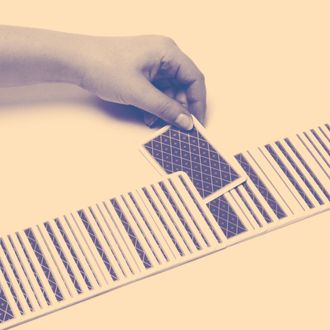
Some aspects of you who are — say, your potential range of scores on traditional intelligence tests or your Big Five personality traits — are fairly fixed and resistant to change. You’re sort of stuck where you are, or at least in the general ballpark. Memory, though, is one area where it’s fairly easy to expand your capabilities considerably. The so-called “memory palace” technique, for example, which has been around for millennia but which was made famous by Joshua Foer’s account of becoming a “memory athlete,” Moonwalking With Einstein: The Art and Science of Remembering Everything, involves imagining yourself walking through a familiar location and “storing” items on a list you’re hoping to memorize in different places, works quite well.
People who adopt the memory palace and certain other techniques can, in relatively short order, achieve levels of recall that seem superhero-like. Which raises the question: How do their brains change as a result? That’s the subject of an All Things Considered segment from yesterday which highlighted some interesting recent research.
In the segment, Rae Ellen Bichell runs down new research from the cognitive neuroscientist Martin Dresler, who is based at the Donders Institute for Brain, Cognition and Behavior at Radboud University in the Netherlands. He and his doctoral student Boris Nikolai Konrad used fMRI imagery to compare the brain activity of 25 champion memory athletes (incidentally, Konrad is one himself) to a group of 23 non-memory-champs “who were matched in age, gender and even IQ to the memory athletes.”
The technology revealed meaningfully different patterns of brain activity. “When memory athletes were asked to recite a long list of memorized words, some portions of brain were activating in unison — making 25 connections that seemed particularly significant among different parts of the brain,” explained Bichell. “The scientists didn’t see that sort of unified activity in the brains of the regular subjects.”
In a another study whose results were published in the same article, the researchers had one group of experiment subjects do memory palace training, another do a different sort of memory training, and a third do nothing at all. “In the group that did memory palace training,” said Bichell, “[the researchers] and their colleagues found that the volunteers’ brain activity had changed to become more like that of the champions of memorization. This was the case when they were reciting [memorized] numbers, but also when they were at rest.” The changes, and the heightened performance, lasted at least four months, when the researchers did a follow-up study.
There are certain limitations to any study based on brain scans, and sometimes people over-extrapolate from these sorts of studies. But this does seem like an interesting step forward in understanding one of humankind’s more flexible cognitive capabilities.




